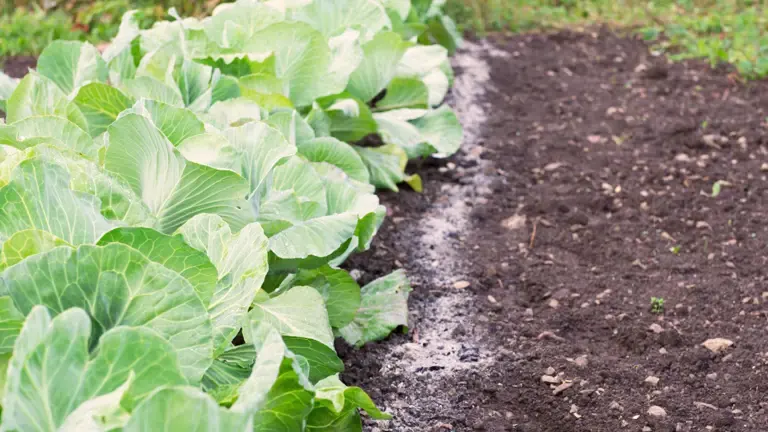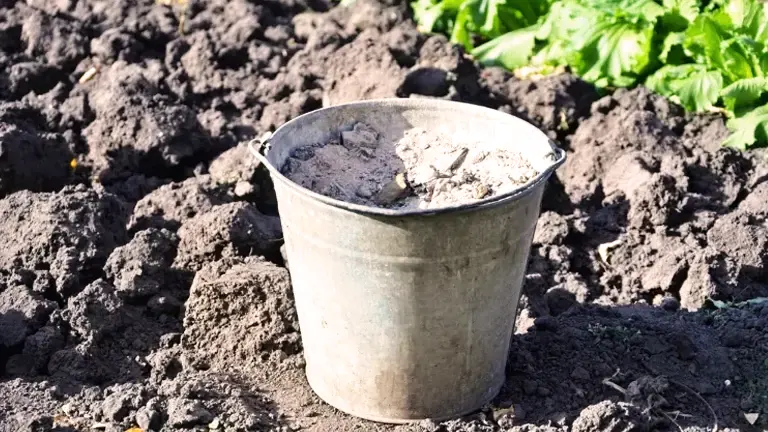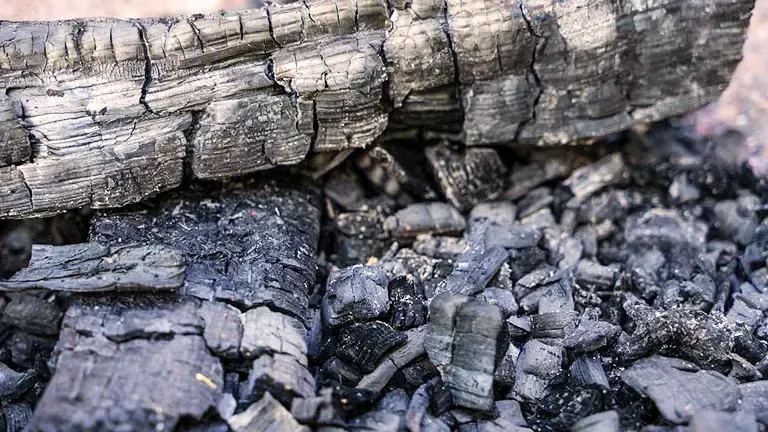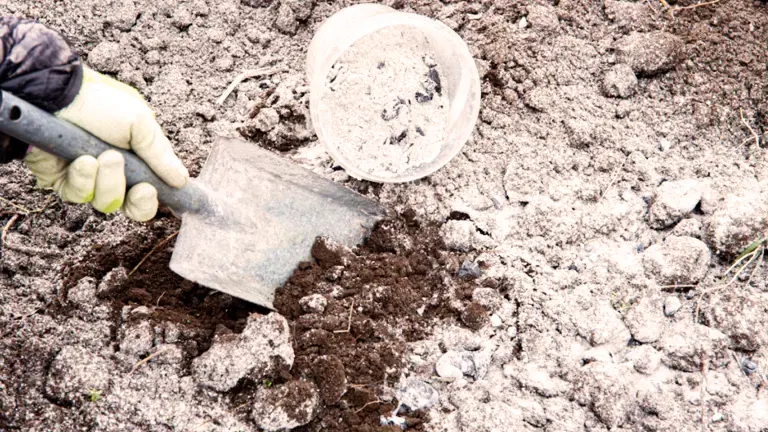Wood Stove Ash For Garden in 2024
- August 29, 2023
- 0 comment
Gardening has a timeless appeal, with enthusiasts constantly seeking ways to enrich their soil and enhance their plants’ growth. Amidst the myriad of commercial and organic fertilizers available, there’s a humble, time-tested, and often overlooked resource: wood ash. Derived from the simple process of burning wood, this ash can be a goldmine for gardeners. Here’s why incorporating wood ash into your garden can be transformative:
My Wood Ash Success Story
Last year, I decided to use wood ash on a patch of my garden where I had struggled with growing vegetables. The soil always seemed too acidic, and plants were not thriving as they should. After a season of sprinkling wood ash and working it into the soil, not only did my onions and radishes flourish, but I also noticed fewer slugs around my lettuce. The difference was clearly visible, and it felt like I had discovered a gardening secret!
Dr. Jane Merrifield, a renowned horticulturist, once said, “Wood ash is like gold for gardens when used judiciously. Not only does it adjust the pH, but it also introduces essential nutrients, making it a sustainable solution for many gardening challenges.
1. Rich Source of Lime and Potassium

Ever since I began gardening, I have been on the hunt for sustainable solutions. It wasn’t long before I discovered the magic of wood ash and its transformative powers.
Lime
In my garden, I found certain patches where the soil was just too acidic. It was here that my plants seemed to struggle, unable to access the essential nutrients they desperately needed. I had heard about agricultural lime, but when I stumbled upon wood ash as an alternative, I was intrigued.
Much like how we humans need our internal pH to be balanced for optimal health, plants are the same. They flourish when their environment, the soil, is balanced. By adding wood ash, I began to observe a change. The soil’s pH shifted closer to neutrality, and this balance was where I saw my plants thrive like never before. They absorbed minerals and nutrients more effectively, leading to lush, vibrant growth.
Potassium
I’ve always been meticulous about reading fertilizer labels, and one thing that caught my attention was the NPK value. Here, ‘K’, representing potassium, stood out to me, holding its own alongside nitrogen and phosphorus.
From my readings and subsequent experimentation, I realized just how crucial potassium was. In my garden, it played the role of a catalyst for photosynthesis. I observed how it aided in regulating the water uptake of my plants and even supported their protein synthesis. The results were clear. My edible plants had an enhanced flavor, and the blooms on my flowering plants were more vibrant than ever.
Through my journey with wood ash, I’ve come to appreciate its natural gifts. It’s become an indispensable ally in my gardening adventures, helping my garden thrive and bloom in ways I hadn’t imagined.
2. Natural Pest Deterrent

In my garden, slugs and snails had become frequent unwelcome guests. They feasted on my young plants, leaving a trail of destruction in their wake. But when I started sprinkling wood ash around my cherished plants, I noticed a significant change. The gritty texture of the ash was too abrasive for these soft-bodied pests. Furthermore, the alkalinity of the ash seemed to deter them, creating a protective barrier around my plants. To my delight, it wasn’t long before these garden invaders became less of a problem, all thanks to the wood ash.
3. Trace Minerals Galore

From my personal gardening adventures, I’ve come to see wood ash as a mineral buffet for my plants. Beyond the frequently mentioned potassium, wood ash presented itself as a rich cocktail of essential minerals.
I observed how calcium from the ash fortified the cell walls of my plants, making them sturdier. Magnesium, on the other hand, seemed to enhance the photosynthesis process, giving my garden a renewed vibrancy. And then there were the trace minerals like zinc, copper, and boron. While they might be required in smaller amounts, their influence was undeniable. Each played a unique, specialized role that fine-tuned the health and growth of my plants. The overall impact on my garden was profound, all thanks to the myriad of minerals present in wood ash.
4. Recycling & Sustainability

In my garden, every time I sprinkle a spoonful of wood ash onto the soil, I feel like I’m paying tribute to the circle of life. Rather than letting it go to waste, I get to see the nutrients in the ash come full circle, nurturing the very plants that might one day become fuel for warmth. It’s a beautiful reminder of how interconnected everything is. Moreover, knowing that I’m reducing my carbon footprint and promoting sustainable gardening practices fills me with pride and hope for a greener future.
5. Disease Prevention

I’ve witnessed the power of wood ash beyond just pH adjustment. Its alkaline nature seemed to do more than just make the soil favorable for my plants. Over time, I began to notice a reduction in those pesky soil-borne diseases. Many fungi, the culprits behind common plant diseases, often favor slightly acidic conditions. With the wood ash incorporated, my garden’s soil shifted away from these conditions, and it felt as if my plants had an added layer of armor. The ash was more than just a soil enhancer; it was a shield, bolstering the defenses of each plant.
6. Compost Enrichment

When I first started composting, I was amazed at how it transformed my garden, offering my plants a nutrient-rich treat. Then, on a whim, I decided to mix in a little wood ash. Almost instantly, I felt like I had discovered a gardening secret. With just a dash of ash, the mineral content of my compost seemed supercharged. The change was evident as my plants seemed to thrive even more, almost as if they were getting gourmet food.
But, just like in cooking, I’ve learned that moderation is key. Too much wood ash could swing the compost’s pH too far to the alkaline side. By using it sparingly, I ensure my compost remains balanced, giving my plants just the right blend of nutrients they crave.
Guidelines & Precautions for Wood Ash in Gardens
Wood Source: Pure Roots
The origin of the wood ash is crucial for its effectiveness in gardens. Just like the health of a plant can be traced back to the soil it grows in, the benefits derived from wood ash are directly linked to the type of wood burned. It’s important to ensure that the wood ash comes from a clean source, free from any treatments or chemicals that could harm your garden.
The Perils of Treated Wood
Using ash from treated, painted, or otherwise processed wood can introduce harmful chemicals into your garden. These substances, designed to improve wood’s appearance or durability, can persist in the ash and negatively affect soil health, plant growth, and potentially contaminate the food chain if used in edible gardens. Therefore, it’s essential to avoid ash from such sources to maintain a healthy garden ecosystem.
Amount: Alkalinity Alert
Wood ash is naturally alkaline, which can be beneficial for reducing acidity in soil. However, its strength is also a potential drawback. Over-application of wood ash can lead to soil becoming too alkaline, which might inhibit plant growth. It’s important to use wood ash in moderation and only as needed, based on the soil’s pH level.
Continuous Monitoring
Periodic soil pH testing is akin to a chef tasting and adjusting the seasoning of a dish. It’s crucial for gardeners to monitor the soil’s pH regularly to ensure that the addition of wood ash maintains a healthy balance conducive to plant growth. Adjusting the amount of wood ash used based on these tests can help avoid creating an overly alkaline environment.
Application: Weather Watch
Due to its fine and lightweight nature, wood ash can easily be carried away by the wind. To ensure that it benefits your garden rather than scattering in the breeze, apply wood ash on a calm day. This precaution helps direct the ash precisely where it’s intended – into the soil of your garden beds.
Integration Methods
While sprinkling wood ash directly on the soil surface is a common practice, integrating it more thoroughly can enhance its benefits. Mixing wood ash into the top layer of soil or watering it down after application helps incorporate the ash more deeply, making its nutrients more accessible to plants. This approach ensures a more effective distribution of the ash’s beneficial properties.
Storage: Stay Dry
Wood ash’s effectiveness can be compromised by moisture, which causes it to leach its nutrients prematurely. This not only reduces its value for garden use but can also lead to messy spills. To preserve its benefits, it’s important to keep wood ash dry.
Storage Solutions
Proper storage of wood ash is key to maintaining its quality. Treat it as you would a valuable garden amendment by keeping it in a sealed container stored in a cool, dry place. This way, its nutrient content remains intact, ready to enrich your garden when needed. By following these guidelines and precautions, you can safely and effectively use wood ash to enhance the health and productivity of your garden.
Conclusion
Wood ash, when used correctly, can be a game-changer in the garden. Its multifaceted benefits range from nutrient enrichment to pest deterrence. So, the next time you cozy up near a fireplace or have a campfire, think about the potential of the ashes left behind—they might just be the secret ingredient your garden has been waiting for.
FAQs
- What is wood ash?
Wood ash is the residue left behind after burning wood in a fireplace, wood stove, or campfire. It consists of minerals and trace elements that were present in the wood. - Can I use wood ash in my garden?
Yes, wood ash can be used as a natural fertilizer for gardens. It contains potassium, calcium, and some trace elements that can enrich the soil. However, it’s important to use it in moderation, as excessive use can raise the pH of the soil and disrupt its balance. - How does wood ash affect soil pH?
Wood ash is alkaline and can raise the pH of acidic soils. This can be beneficial for certain plants that prefer slightly alkaline conditions. However, it’s crucial to test your soil’s pH before using wood ash to avoid over-alkalizing the soil. - Can I use wood ash from treated or painted wood?
No, you should only use wood ash from untreated, unpainted, and non-treated wood. Treated or painted wood may contain harmful chemicals that could be detrimental to plants, soil, and the environment. - Can wood ash be used to control pests?
Wood ash has been traditionally used to deter certain pests like slugs and snails due to its abrasive texture. However, its effectiveness might vary, and there are other pest control methods available as well. - Can wood ash be used for cleaning?
Yes, wood ash can be used as an abrasive cleaner for pots, pans, and other surfaces due to its gritty texture. It’s a natural alternative to commercial cleaning products. - Is wood ash safe for pets and wildlife?
Wood ash can be harmful if ingested in large amounts. Keep pets away from areas where you’ve applied wood ash, and avoid leaving large piles of it in places accessible to wildlife. - Can I use wood ash in compost?
Yes, wood ash can be added to compost in small quantities. It can help raise the pH of acidic compost and provide some essential minerals. However, use it sparingly to prevent over-altering the compost’s pH. - Is all wood ash the same?
Different types of wood will yield slightly different types of ash due to variations in mineral content. Hardwoods generally produce ash with more nutrients than softwoods. - Can wood ash be used for de-icing sidewalks and driveways?
Yes, wood ash can be used as a natural alternative to commercial ice melt products. It provides traction and helps melt ice due to its heat-absorbing properties. However, it should be used sparingly and not near plants or water bodies.
We’re eager to learn from your experiences! Feel free to share your personal insights and thoughts about using wood ash in your garden in the comments. Your valuable experiences might just be the guidance fellow gardeners need to make well-informed choices

David Murray
Forestry AuthorI'm David Murry, a forestry equipment specialist with a focus on chainsaw operation. With over 13 years of experience, I've honed my skills in operating and maintaining a wide range of machinery, from chainsaws to log splitters. My passion for the outdoors and commitment to sustainable forestry drive my work, which emphasizes safety, efficiency, and staying updated with industry advancements. Additionally, I'm dedicated to sharing my expertise and promoting environmental awareness within the forestry community.













Leave your comment